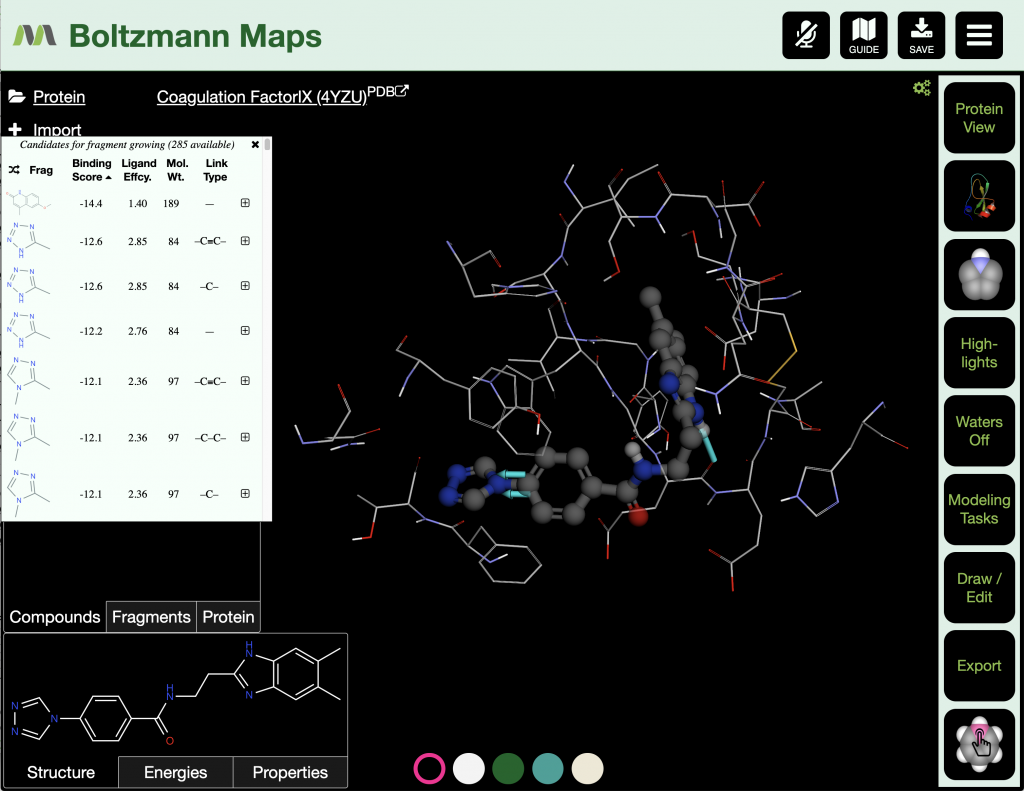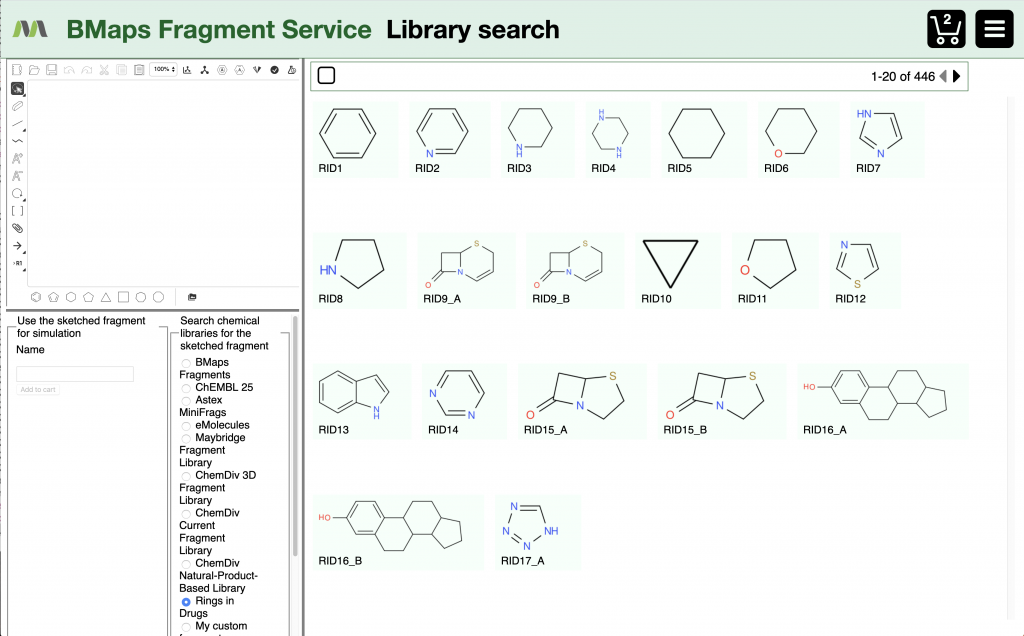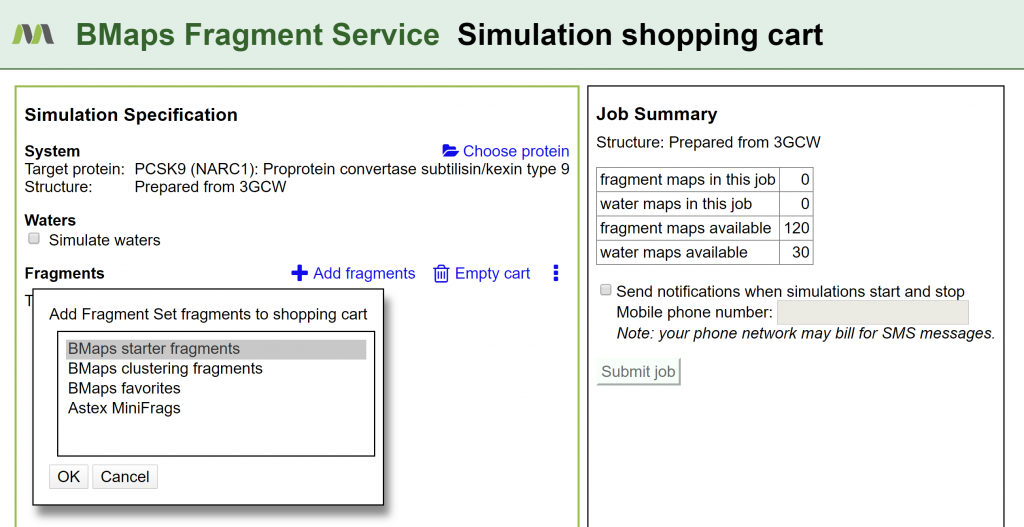The latest BMaps update has support for a broader set of fragment linking options when growing with fragments, significantly expanding the opportunities for compound modifications. By accessing more fragments in new sub-pockets, the new linking features provide lots of new ideas for improvements to your compounds, ranked by fragment binding scores. In addition to simple bond linking, there is now:
- methylene linking (–C– methane or single carbon);
- ethane linking (–C–C– 2 carbons);
- acetylene linking (–C≡C– 2 carbons connected by a triple bond).

The BMaps fragment simulation service also added a new library of fragments to the options for simulation: Rings in Drugs. The fragments in this library were identified by Richard Taylor in his paper, “Rings in Drugs: Miniperspective”, J. Med. Chem. 2014, 57, 14, 5845-5859.

Lastly, to simplify getting started with new simulations, the fragment service now includes several built-in fragment sets, ready to run against your favorite structure:
- BMaps starter fragments (5 fragments to experiment with running fragment simulations or to validate your imported protein structure);
- BMaps clustering fragments (16 fragments for hot-spot analysis and survey various types of functional group interactions with a protein);
- BMaps favorites (117 fragments used by Conifer Point chemists for an initial project investigations);
- Astex MiniFrags (small fragments good for X-ray crystallography soaking experiments).
